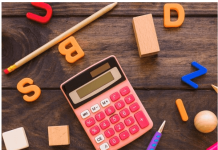In order to apply reading techniques, we will mainly define What is reading ?.
Reading is the mental process, which begins with capturing paragraphs through the senses (visual, or tactile if it is Braile reading), so that then the human being understands the meaning of what is read in some medium: books, magazines, among others, printed or virtual, in order to acquire new knowledge or for fun.
However, it is important to emphasize that reading for reading involves only the sensory part (mechanical reading), so if we do a little leaf on the reading we have not done it correctly. But if we involve all our senses with the mental process that allows us to decipher the message, analyze it and evaluate it, we can succeed in understanding.
Then we will present the types of reading, which you can do:
Contents
1. Reading Aloud:
It allows the reader to perfect the act of reading correctly, listening and being listened to, in order to correct any pronunciation error.
2. Silent Reading:
It allows the reader to study effectively or to do a research task with greater concentration, reading at a pace that enables you to be quicker in easy-to-understand parts and to pause in those with some difficulty.
3. Sequential Reading:
It allows the reader to understand what is written in an orderly way, that is, from start to finish.
4. Punctual Reading:
Only the parts that interest the reader are read.
5. Diagonal Reading:
It is read quickly by traversing the text from the upper left corner to the lower right, rescuing only the highlighted parts of the text, such as titles or phrases highlighted for example with italics or bold, or in a paragraph the first lines, or the conclusion, omitting the details.
6. Specialized Reading:
Where you need to understand certain codes used in writing, such as the case of reading musical notations or chemical or mathematical formulas.
You will realize that there are different types of reading that will help you involve all your senses with the mental process of reading comprehension, so now we will introduce you to 6 simple and practical techniques with which you can understand what is read:








